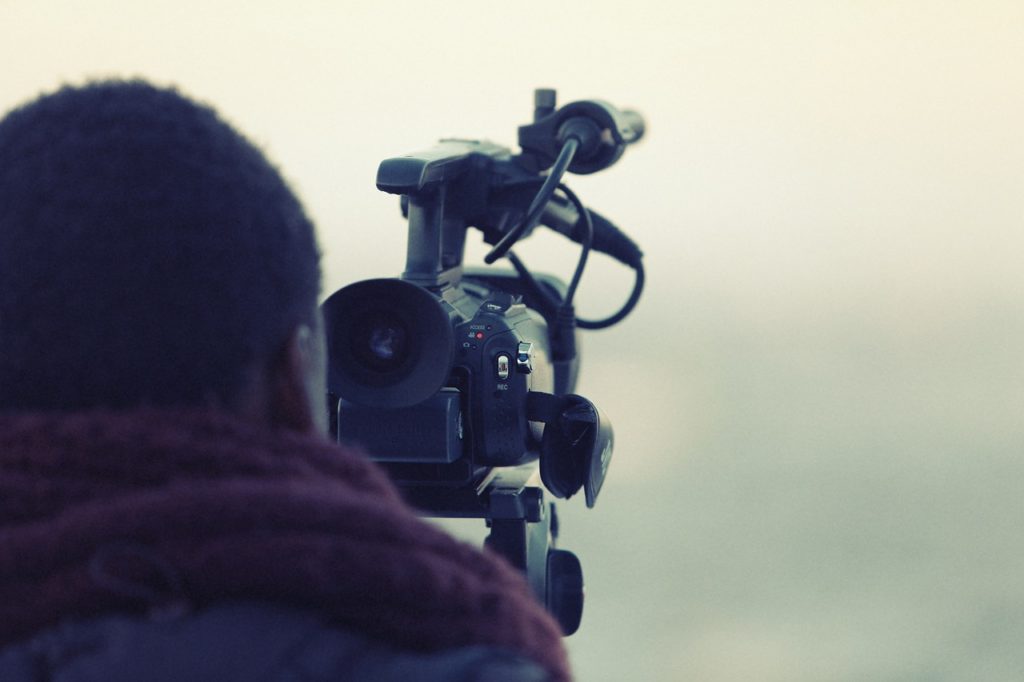Welcome to the third part of our series exploring the world of online promotional videos. In Part 1, we took a close look at a great promotional video from dollarshaveclub.com and considered the elements that made it so exceptional to the point that it went viral.
Last week in Part 2, we considered the importance of targeting market segments, rather than trying to make something that is overly generic (and therefore lacking focus).
This week in Part 3, we’re giving you our practical guide explaining exactly what equipment and software you will need to make a great promotional video, as well as how to edit and finish your piece to a professional standard.
Finally in Part 4, which you can expect next week, we will be focussing specifically on green screens, and the benefits and practicalities of their use. We hope you enjoy this series.
Video promos were once upon a time the sole reserve of the big corporation. There’re a couple of reasons for this. Firstly the cost. Quality video cameras with all the sound gear and lighting were expensive pieces of kit, and the hiring of a film and sound crew wasn’t particularly cheap either – and thusly many SMEs (small to medium enterprises) were simply priced out of the market.
Secondly there was the problem of distribution. Before the internet took off, the only places where you would see promotional videos were on the television or at the cinema. And guess what – it was pretty darn expensive to buy your way into a slot on any of those platforms either.
But now things are different. Digital cameras are abound, with many of even the cheapest ones being able to capture HD footage with not bad sound quality either. In fact, such is the power of the devices that it is even quite feasible to produce a perfectly acceptable promo just using a smartphone or tablet.
What is more, now the internet is in the home and even in the pocket of the majority of people in the country, SMEs no longer have to worry about paying huge fees to a television channel for broadcasting their promos. If you’ve got a website (and you will have one of those I have absolutely no doubt) then you can embed your video right there for no extra charge. Then, all you need to do is share it (for free) across all of your social media outlets and you will gain immediate exposure to your brand.
If you set up a (free) YouTube, Vimeo or other video streaming channel, then you can even get your promo video out there and seen on one of the biggest social networks in the world (I’m referring to YouTube in this instance, of course).
So, it’s no wonder that promotional video marketing has become one of the leading methods of communicating important messages to the followers of brands. Now even the smallest of businesses are jumping on the band wagon and creating their own promos – which is why you should too, for if you don’t, then you can bet your bottom dollar that at least one if not all of your rivals will. So, get in there first, and try and create one of the best promos the internet has ever seen.
It’s All About Quality
As discussed in some detail in Part 1, the only way that your promo video is going to do your brand any good is if it is of top notch quality. In fact, producing a bad video will probably be worse for your company than if you produced no video at all. Put simply, a cheesy, awkward, poorly acted and poorly executed promo can do irreparable damage to a brand, so it’s highly important that you understand everything that goes into making and editing a high quality promotional video before you start to shoot.
What You Will Need
Ok, so although I mentioned above that it is possible to make a perfectly acceptable video using just a smartphone and perhaps a free editing app from the app store, if you’re serious about making a great quality video, then, realistically, you will need to invest in some higher quality hardware and software to do the job right.
· A suitable location
· Actors
· Props
· Lighting
· Cameras
· Camera operators
· A computer
· Editing Software
There are so many promotional videos out there today that, put simply, viewers will not accept anything that is substandard. Now, that doesn’t mean that you are going to have to go out and either spend a fortune buying or hiring the latest and greatest in top-end video cameras, lighting and equipment. Nor does it mean that you are going to have to have to hire in Steven Spielberg or Martin Scorsese in order to do a proper job.
But you really should take some serious consideration into the quality of the production equipment that you use, because consumers will only pay attention to your video if it at least has the appearance of being professionally produced, even though it has really only been a novice (aka you) who has actually created it.
Ok, let’s get down to it – lights, camera, action!!
1. Script
This may seem like a bit of a no-brainer, but unless you are the king or queen of improvisation, then the first thing that you will of course have to do is write yourself a script.
The script is perhaps the most important element of any successful video. We went over the key points of what makes a successful script in Part 1, so I won’t repeat myself again here.
But, what I will say is that your script will act as the blueprint for your promo – use it as your go-to guide throughout the whole process, from rehearsal to shooting to editing.
2. Storyboarding
This part of the process is key to making sure that you end up with a successful end product. Your script is just words on a page, and, although it is vital as a reference and is in fact the essence of your idea, the whole point of it is to bring it to life as something visual – and the first step in doing that is to create some storyboards.
When storyboarding, you will break your script down into individual shots. Now, you don’t have to be Leonardo Da Vinci to produce some very workable storyboards. In fact, in some cases it is better that your illustrations remain as crude as possible, as this will lead to more flexibility of vision when it comes to shooting.
One of the great benefits of the storyboarding process is that you will be able to get a greater idea of just what props you will need, including costumes and backgrounds.
3. Shoot!
Shoot your script. If you’ve done all of your storyboarding correctly and have managed to attain all of the right equipment, then the actual shooting of the script should all run relatively smoothly and be over in just a few takes – and it will probably be a lot of fun, too.
Now, you may think that you can get away without professional lighting. You can’t. In fact, poor lighting is one of the first giveaways of a cheaply produced piece of promotional footage, and consumers will not be fooled.
The basics of lighting is in fact quite simple, especially for the section of your video where you will have someone talking to the camera explaining about your product (don’t limit your video to this, of course – we’ve seen it a million times and, quite frankly, it’s dull, and doesn’t convince anyone to buy anything. But, nonetheless, thinking about how you would light that shot is a good way to illustrate the larger point).
It’s advisable to use the three-point standard lighting setup when lighting still shots. It’s tried and tested, and will illuminate your object clearly and give a very professional look to your video.
4. Edit
Installing a video editor on your computer will be essential. In the editing room is where the real movie magic happens. Now all your bloopers can be tossed in the bin, and your footage can be spruced up so it’s got a professional finish, complete with any music or voiceovers that you want.
Now, again, you can spend a fortune on some high-end commercial video editors, but if it’s just the occasional short promo that you’re making then there will be no real need to go this far.
Indeed there are some brilliant free tools that are out there already on the web that can help you do exactly what you want.
Here is our list of the best:
1. Windows Movie Maker
2. Avidemux
3. MPEG Streamclip 1.2.1b6
All of these editors have their own special functions and features, but all should be fully equipped to do the job that you require. So, browse around. They’re free so you can try them all out if you want and decide which one you get on with best.
5. Test And Publish
Don’t make the mistake of just publishing your brand new promotional without showing it to a few trusted people first. You will probably be very proud of yourself the first time you call rap on your very own promo – so much so in fact that you might even be blinded by it. That is to say that consumers will not be so forgiving of any errors that you’ve left in as you will be. So, show the video to a few people that you trust first, and get them to give you some honest feedback.
Besides anything else, this will be a great way to get some outside perspective on what you have created, and may well end up unearthing some ideas for improvements that you simply haven’t thought of before.
Once you’ve satisfied them with any further edits that you have made, only then is it time to publish.
Look out for the final part of our promotional video series next week where we will be taking a look at green screens, how to use them and how they will benefit your promotional videos.
Get more leads, make more sales, grow your brand faster.







